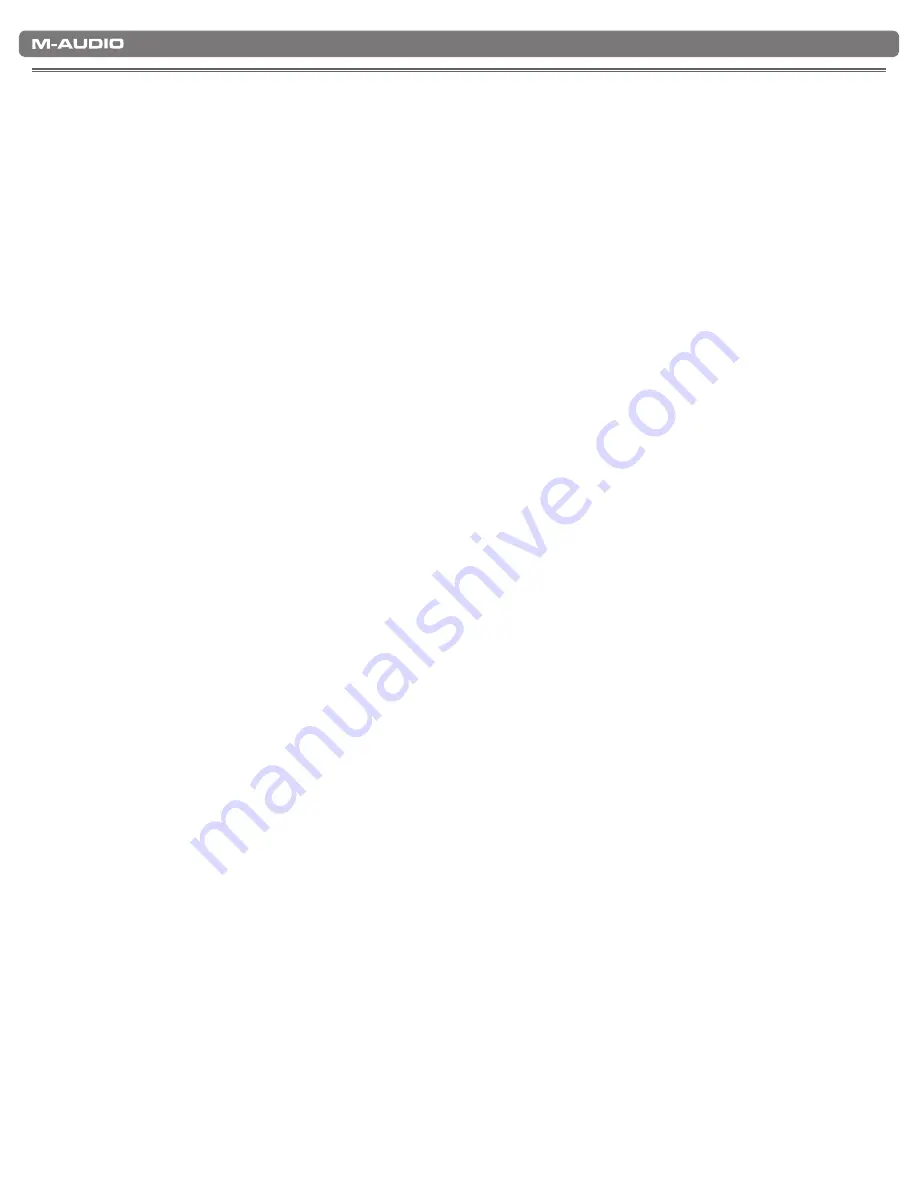
|
7
KeyStudio User Guide
Getting Started with Music Creation Software
7
If you are new to MIDI (Musical Instrument Digital Interface), you may find it challenging to understand why sounds have not simply
been included in the keyboard You will find that using a software-based sound source and recording system allows for access
to an extremely large array of high quality sounds, a large graphic user interface, and freedom to work with many music creation
applications. A basic understanding of MIDI will enable you to take advantage of its wealth of creative possibilities.
Pressing a KeyStudio key causes the keyboard to send out MIDI (Musical Instrument Digital Interface) data. MIDI data just gives
instructions on how a sound should play These instructions dictate parameters such as what note to play, when to play it, how loud
to play it, and which sound to use
When using a virtual (software) instrument within your recording software, data from the KeyStudio keyboard is sent to the
sequencer software, routed to a virtual instrument, and sent to an audio output. This process turns MIDI data into audible sounds.
For this, you must configure your music software to read MIDI data being sent from KeyStudio, and play the sound back accordingly.
In many music applications, much of this process is automated. GarageBand, for example, only requires you to highlight a Software
Instrument track in order to be able to hear what you are playing on your KeyStudio keyboard Provided your computer has built-in
speakers, or you have external speakers connected (and these speakers are not muted or turned down), you should hear sounds
corresponding to notes you play on KeyStudio. See the documentation associated with any MIDI-compatible music software you are
using for more information
Key Names
The letters printed above the white keys stand for the names of the musical notes the keys represent. The number next to each
letter marks the octave each key belongs to (More information on octaves can be found in the following section ) Black keys are
“semitones” to their adjacent white keys and don’t have a dedicated letter. A semitone represents the distance in pitch from one note
to its immediate neighbor
Black keys usually have the same name as the next higher or lower white key, but have an additional sharp symbol (# – semitone
higher than the letter indicates), or flat symbol (b – semitone lower than the letter indicates) attached to them. For example, the name
of the black key to the right of C3 is C#3 (C-sharp 3), but it can also be called Db3 (D-flat 3), since it is also adjacent to the D key
on its right. In other words, black keys have two valid names, depending on the context of the musical notation they are part of.
Octave Buttons
An octave contains 12 notes, and each octave is marked out clearly on your KeyStudio keyboard by black and white sections starting
on C. Each octave is given a number.
KeyStudio is able to shift the pitch of its keys up or down by one or more octaves When the keyboard’s octaves are not shifted
(octave shift set to zero), the lights above both the Octave “<” and Octave “>” buttons will be lit. The default octave shift designation
is zero and will be the octave setting each time you power up the keyboard
If you press the Octave “>” button once, the light above the Octave “<” button will go out, indicating the keyboard is now playing
an octave higher. If you press the Octave “>” button again, the keyboard will be shifted up two octaves. It is possible to shift the
keyboard up a total of four octaves using the Octave “>” button. To shift the octave down, press the Octave “<” button in the same
manner: pressing once for one octave, twice for two octaves, and three times for three octaves It is possible to shift the keyboard
down a total of three octaves
To return the keyboard’s octave shift to zero, press both the Octave “<” and “>” buttons at the same time. Both LEDs will light,
indicating that the octave shift has returned to zero In summary, when the Octave buttons are set to control octave shift (default), if
the light is only lit above the Octave “>” button, the octave is shifted up. If the light is only lit above the Octave “<” button, the octave
is shifted down






















